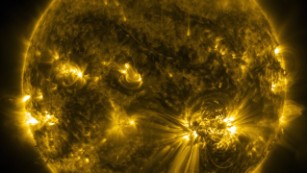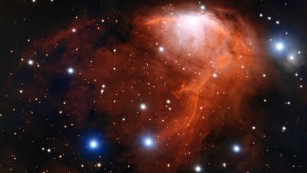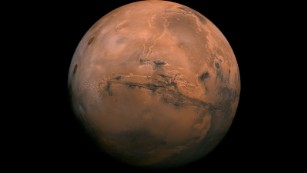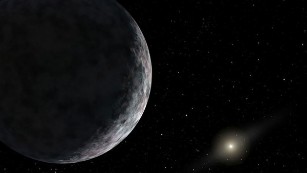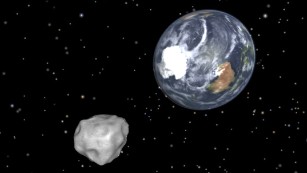(CNN)Astronomers have made two new planetary discoveries that they claim expand the known boundaries of our solar system — and they may be the biggest breakthroughs in the search for alien life.
The two finds, one planet at the edge of our solar system and one just beyond, have both been hailed as major scientific advances.
Commenting on one of the planets, Brad Tucker, an astronomer from Mount Stromlo Observatory in Canberra, Australia who was not involved in the research, said it “probably gives us the best chance for life outside our solar system right now.”
“One of the goals of astronomy and astrophysics and finding these planets is firstly to really find another Earth,” he added. “And part of the reason of finding another Earth is that we ultimately do want to find life in the universe. It’s a question that weighs on everyone’s mind.
Life outside solar system
Lying on the edge of our solar system, a new, rocky planet close to the size of Earth and named GJ 1132b, is the discovery that holds the most potential for finding new life to date, according to astronomers.
The scientists who discovered it it said its small size and proximity — it’s three times closer than any other similar object found orbiting a star — “bodes well for studies of the planet’s atmosphere,” according to their report in the journal, Nature.
“GJ 1132b (is) arguably the most important planet ever found outside the solar system,” Drake Deming, an astronomer at the University of Maryland said in an accompanying letter in the journal. He added that it’s proximity will “allow astronomers to study the planet with unprecedented fidelity.”
Found moving across a “red dwarf” star that is only a fifth of the size of the world’s sun, the planet has a radius only 16% larger than Earth’s, and has surface temperatures that reach 260 degrees Celsius. Although that’s too hot to retain liquid water or sustain life as we know it, Tucker said it was cool enough to support some of the basic building blocks of life, and possibly support life forms like bacteria.
“We haven’t even found anything close to this so far,” he said.
“It’s more habitable, it’s less harsh and this gives us a good strong chance of actually finding life or something as opposed to the other Earth-like planets found to date.”
The planet also completes an orbit or passes its star once every 1.6 days, providing more opportunities for research and measurement than any other planet has provided to date, Tucker added.
“By being able to find evidence of these smaller, more inner planets, these rocky planets that we have in our solar system, we’re really realizing that the planets are probably in the trillions in our galaxy alone.”
NASA: Solar wind transformed Mars into cold, dry planet
Growing solar system
The known boundaries of our solar system have also been expanded with the discovery of a “dwarf planet” so distant that it’s three times further away than Pluto.
Scientists said initial studies suggest that the object, which has been given the designation V774104, is likely to be an icy body between 500 to 1,000 km wide, although further research is required to determine its orbit.
“We can’t explain these objects’ orbits from what we know about the solar system,” said Scott Sheppard, an astronomer at the Carnegie Institution for Science in Washington, D.C., who announced the discovery at a meeting of the American Astronomical Society.
Sheppard was part of a team of astronomers from Japan’s Subaru telescope, located on top of Mauna Kea, a dormant volcano in Hawaii, that found the icy planet, which lies 15.4 billion kilometers (9.6 billion miles) from the sun.
The discovery marks the edge of the solar system, and hence the end of the sun’s gravitational influence, according to the scientists. It also confirms that the solar system is far more complicated than astronomers previously imagined, according to Tucker.
“The reason this find is important is we don’t actually know how our solar system was formed, there really is a mystery out there,” he said. “We have a poor understanding of it because we keep finding new objects like this, and if we don’t understand how our solar system formed, we don’t know the ingredients that are required to make an earth. And the ultimate question — what is the boundary of our solar system?
